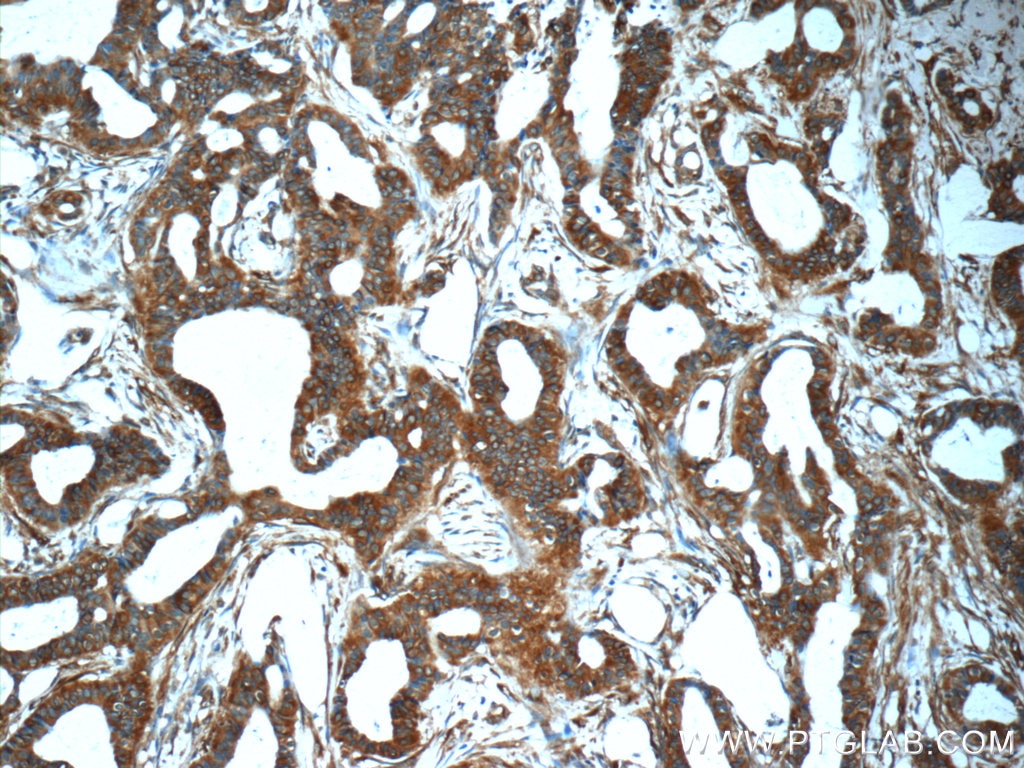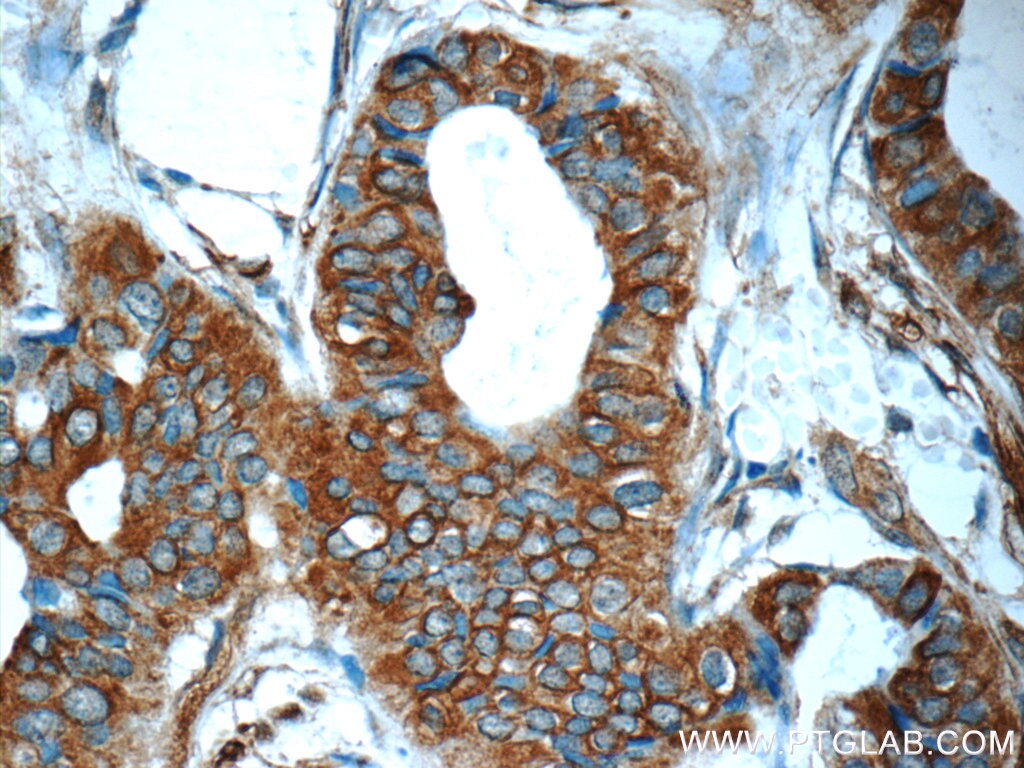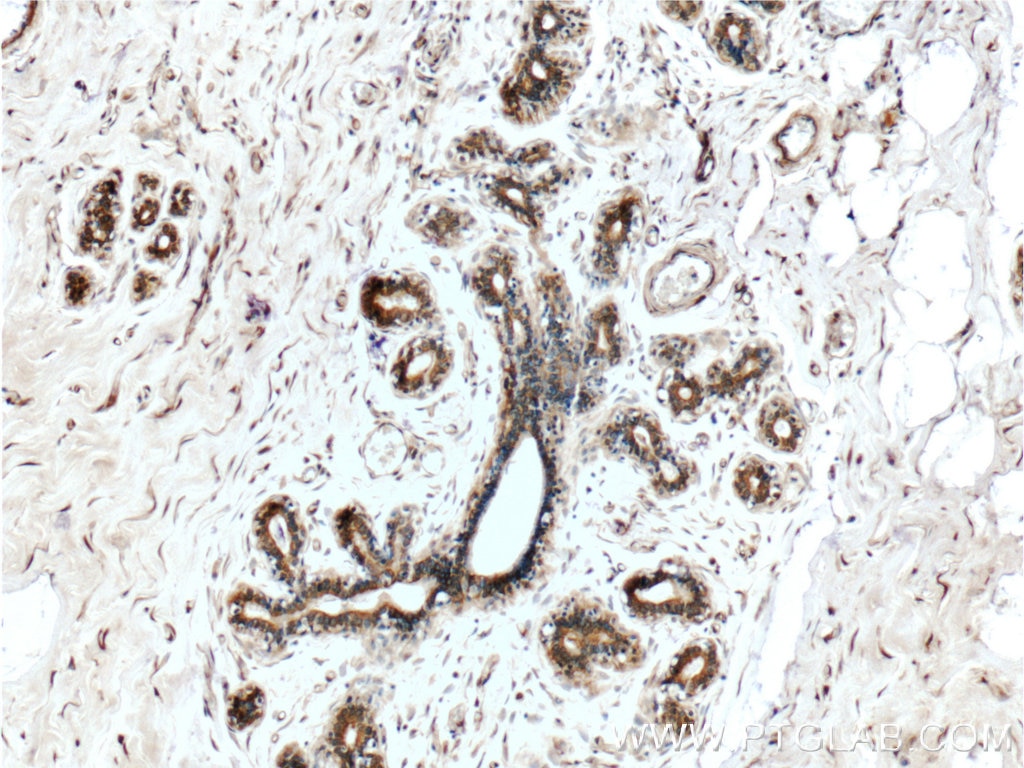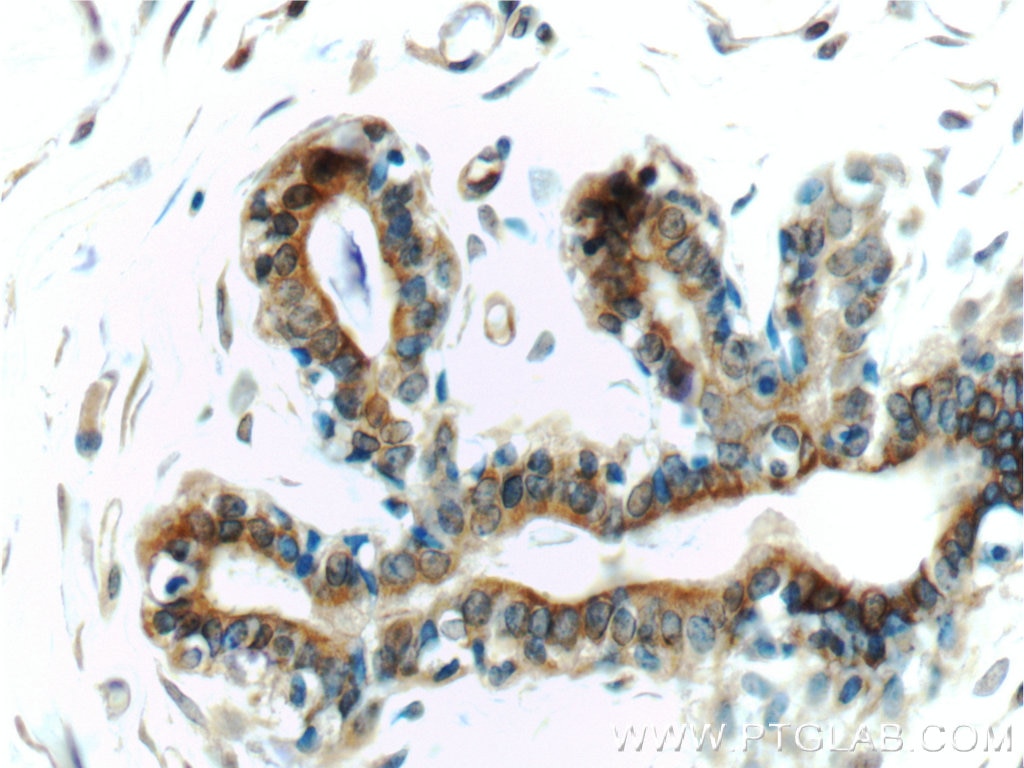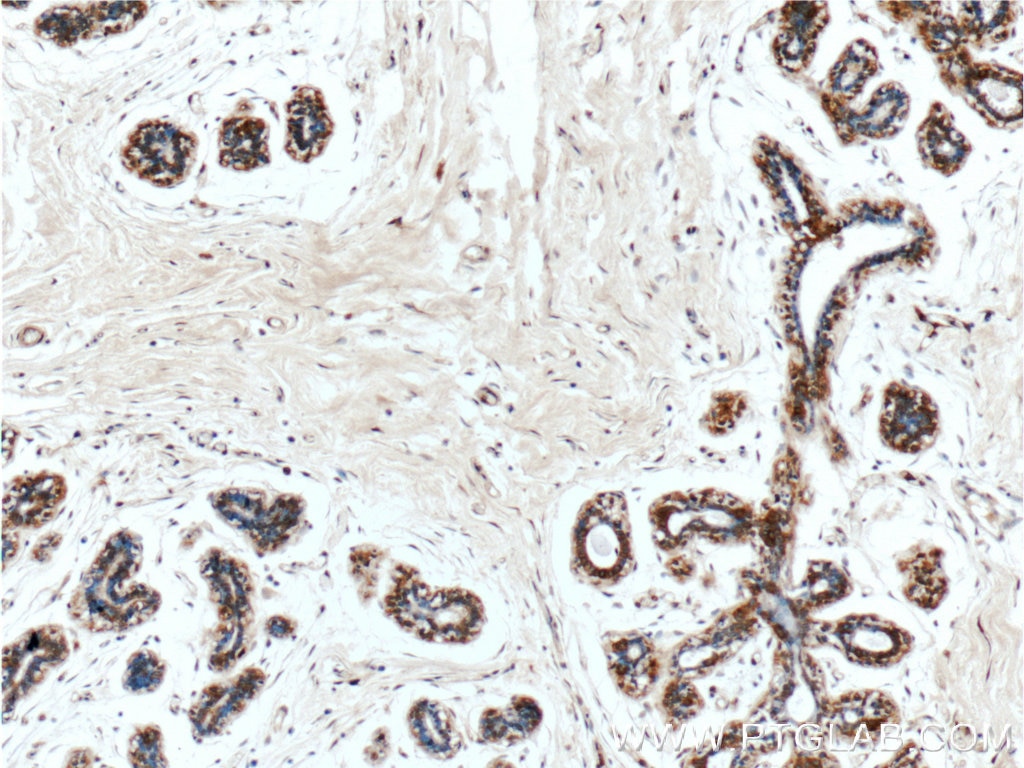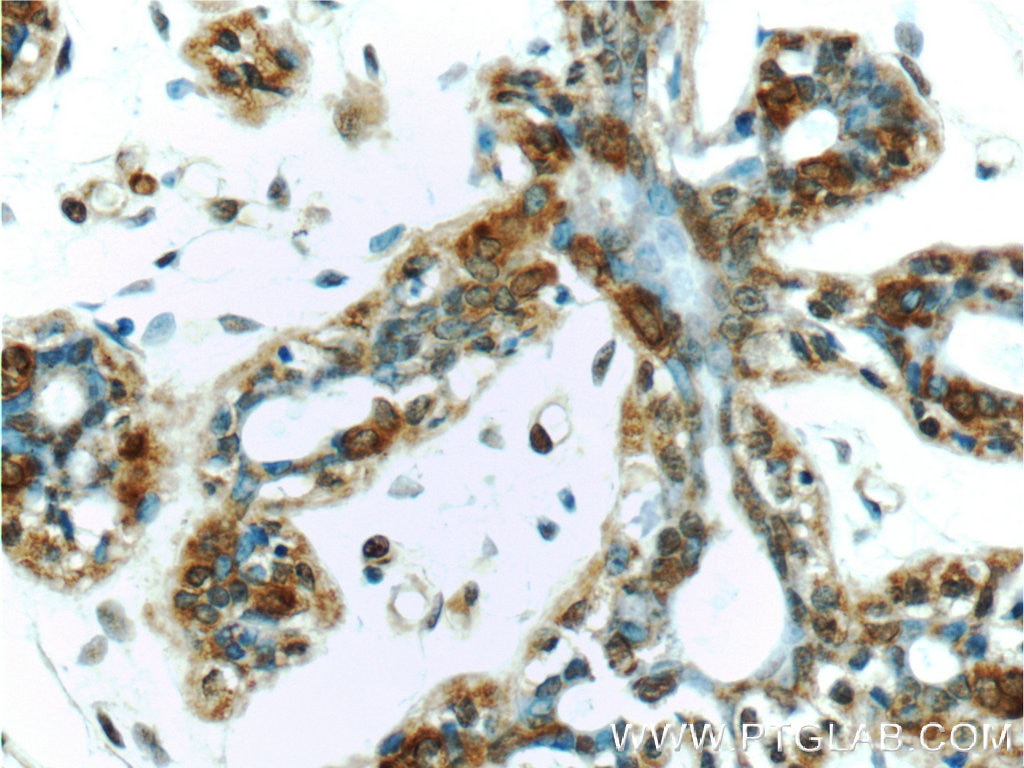Mammaglobin A Polyklonaler Antikörper
Mammaglobin A Polyklonal Antikörper für IHC, ELISA
Wirt / Isotyp
Kaninchen / IgG
Getestete Reaktivität
human
Anwendung
IHC, ELISA
Konjugation
Unkonjugiert
Kat-Nr. : 25645-1-AP
Synonyme
Geprüfte Anwendungen
| Erfolgreiche Detektion in IHC | humanes Mammakarzinomgewebe, humanes Brustgewebe Hinweis: Antigendemaskierung mit TE-Puffer pH 9,0 empfohlen. (*) Wahlweise kann die Antigendemaskierung auch mit Citratpuffer pH 6,0 erfolgen. |
Empfohlene Verdünnung
| Anwendung | Verdünnung |
|---|---|
| Immunhistochemie (IHC) | IHC : 1:20-1:200 |
| It is recommended that this reagent should be titrated in each testing system to obtain optimal results. | |
| Sample-dependent, check data in validation data gallery | |
Produktinformation
25645-1-AP bindet in IHC, ELISA Mammaglobin A und zeigt Reaktivität mit human
| Getestete Reaktivität | human |
| Wirt / Isotyp | Kaninchen / IgG |
| Klonalität | Polyklonal |
| Typ | Antikörper |
| Immunogen | Mammaglobin A fusion protein Ag22324 |
| Vollständiger Name | secretoglobin, family 2A, member 2 |
| Berechnetes Molekulargewicht | 93 aa, 10 kDa |
| GenBank-Zugangsnummer | BC128252 |
| Gene symbol | Mammaglobin A |
| Gene ID (NCBI) | 4250 |
| Konjugation | Unkonjugiert |
| Form | Liquid |
| Reinigungsmethode | Antigen-Affinitätsreinigung |
| Lagerungspuffer | PBS with 0.02% sodium azide and 50% glycerol |
| Lagerungsbedingungen | Bei -20°C lagern. Nach dem Versand ein Jahr lang stabil Aliquotieren ist bei -20oC Lagerung nicht notwendig. 20ul Größen enthalten 0,1% BSA. |
Hintergrundinformationen
SCGB2A2, also known as mammaglobin A, is a member of the secretoglobin superfamily. It is a breast cancer-associated antigen almost exclusively over-expressed in primary and metastatic human breast cancers, making it a specific molecular marker and a potential therapeutic target for breast cancer. SCGB2A2 is a 93-amino acid protein with a calculated molecular weight of 10.5 kDa.
Protokolle
| PRODUKTSPEZIFISCHE PROTOKOLLE | |
|---|---|
| IHC protocol for Mammaglobin A antibody 25645-1-AP | Protokoll herunterladenl |
| STANDARD-PROTOKOLLE | |
|---|---|
| Klicken Sie hier, um unsere Standardprotokolle anzuzeigen |
